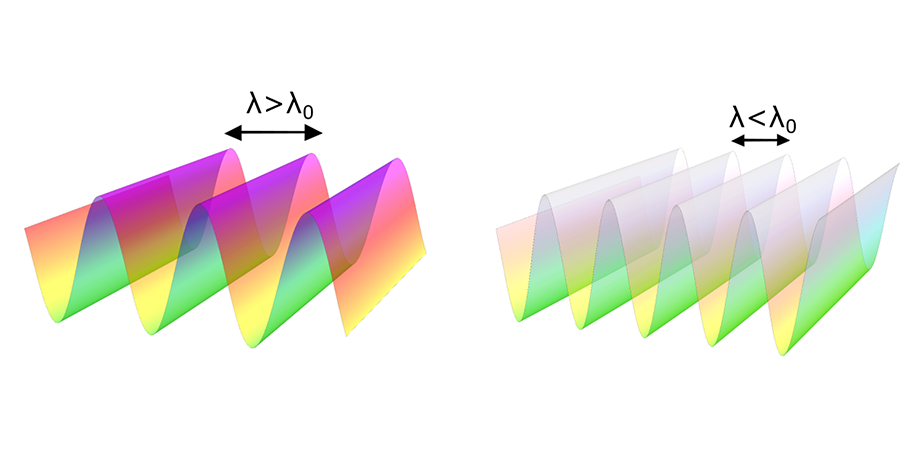Electromagnetic Field Enhancement with “Ghost Waves”

Almost twenty years ago, John Pendry demonstrated that a planar slab of a negative index material could act as a perfect lens that is not limited by the conventional diffraction limit. Seemingly nothing short of miraculous, Pendry's proposal of this "superlens" opened a whole new research area, which since then grew into the broad and rapidly advancing field of metamaterials.
The key to the "magic" of the superlens lies in its ability to focus not only propagating but also evanescent waves—when the negative index medium turns their rapid decay into the exponential growth of the field. However, light absorption that is inherent to optical metamaterials severely limits the field enhancement. Despite multiple attempts for nearly two decades since the seminal work of Sir Pendry, the optical superlens has remained an elusive goal, along with its promise of evanescent field control.
Recent discovery of exponential field amplification in dielectric media with biaxial anisotropy finally offers the solution to this seemingly insurmountable problem. As reported recently in Advanced Photonics by Evgenii E. Narimanov, of Purdue University's Electrical and Computer Engineering program at the Birck Nanotechnology Center in West Lafayette, Indiana, biaxial dielectric materials support electromagnetic waves that combine the properties of propagating and evanescent fields. These so-called "ghost waves" can be resonantly coupled to the incident evanescent field, which then grows exponentially through the anisotropic media—as in the case of negative-index superlens. As ghost waves are supported by transparent dielectric media, the proposed approach to electromagnetic field enhancement is free from the "curse" of the light absorption in metamaterials.
Furthermore, instead of using complex composite materials that are difficult and costly to fabricate, the proposed approach relies on readily available natural dielectric crystals—which should greatly facilitate the practical applications of this discovery.
Strong field enhancement due to resonant coupling to the ghost waves can find many applications—from nonlinear optics and optoelectronics to optical sensing, where a small variation of the refraction index of the isotropic medium surrounding the biaxial slab would lead to dramatic change of the reflectivity.

The spatial evolution of an evanescent wave that is incident on the negative index superlens (a) and biaxial dielectric material (b). In the case of the superlens, the evanescent field grows exponentially inside the negative index medium (a). For the biaxial dielectric, the incident evanescent field evolves into a ghost wave that combines the oscillatory behavior with the exponential grows of its envelope. In both cases, the device exponentially "amplifies" incident field intensity.
Read the original research article in the peer-reviewed, open-access journal Advanced Photonics: E. Narimanov, "Ghost resonance in anisotropic materials: negative refractive index and evanescent field enhancement in lossless media," Adv. Photonics 1(4) 046003 (2019).
For more context and discussion of this exciting research, see the commentary by Dr. Denis Baranov in the same issue of Advanced Photonics.
| Enjoy this article? Get similar news in your inbox |
|



